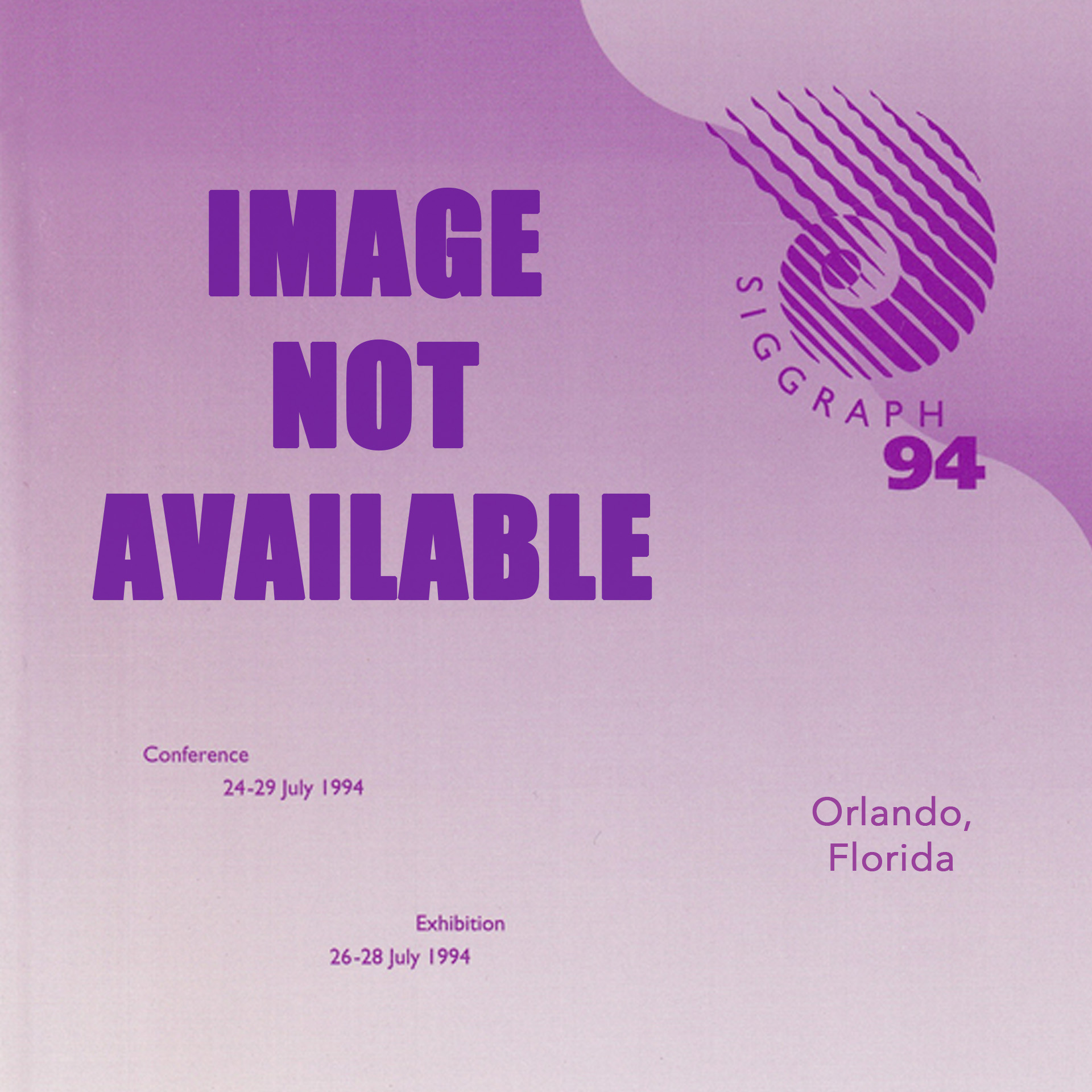“Error-bounded antialiased rendering of complex environments” by Greene and Kass
Conference:
Type(s):
Title:
- Error-bounded antialiased rendering of complex environments
Presenter(s)/Author(s):
Abstract:
In previous work, we presented an algorithm to accelerate z-buffer rendering of enormously complex scenes. Here, we extend the approach to antialiased rendering with an algorithm that guarantees that each pixel of the output image is within a user-specified error tolerance of the filtered underlying continuous image. As before, we use an object-space octree to cull hidden geometry rapidly. However, instead of using an image-space depth pyramid to test visibility of collections of pixel samples, we use a quadtree data structure to test visibility throughout image-space regions. When regions are too complex, we use quadtree subdivision to simplify the geometry as in Warnock’s algorithm. Subdivison stops when the algorithm can either analytically filter the required region or bound the convolution integral appropriately with interval methods. To the best of our knowledge, this is the first algorithm to antialias with guaranteed accuracy scenes consisting of hundreds of millions of polygons.
References:
1. G. Abram and L. Westover, Efficient alias-free rendering using bit-masks and look-up tables, Proc. Siggraph ’85, 53- 59, July 1985.
2. J. Airey, Increasing update rates in the building walkthrough system with automatic model-space subdivision and poten-tially visible set calculations, Tech Report TR90-027, C.S. Dept., U.N.C. Chapel Hill, 1990.
3. G. Alefeld and J. Herzberger, Introduction to interval com-putations, Academic Press, 1983
4. J. Bloomenthal, Edge inference with applications to antialias-ing, Proc. Siggraph ’83, 157-162, July 1983.
5. L. Carpenter, The A-buffer, an antialiased hidden surface method, Proc. Siggraph ’84, 103-108, July 1984.
6. E. Catmull, A hidden-surface algorithm with anti-aliasing, Proc. Siggraph ’77, 6-11, Aug. 1978.
7. E. Catmull, An analytic visible surface algorithm for inde-pendent pixel processing, Proc. Siggraph ’84, 109-115, July 1984.
8. R. Cook, T. Porter and L. Carpenter, Distributed ray tracing, Proc. Siggraph ’84, 137-146, July 1984.
9. R. Cook, Shade Trees, Proc. Siggraph ’84, 223-230, July 1984.
10. R. Cook, Stochastic sampling in computer graphics, ACM Transactions on Graphics, 51-72, Jan. 1986.
11. F. Crow, The aliasing problem in computer-generated shaded images, CACM, 799-805, Nov. 1977.
12. F. Crow, Summed-area tables for texture mapping, Proc. Siggraph ’84, 207-212, July 1984.
13. M. Dipp~ e and E. Wold, Antialiasing through stochastic sam-pling, Proc. Siggraph ’85, 69-78, July 1985.
14. E. Feibush, M. Levoy and R. Cook, Synthetic texturing using digital filters, Proc. Siggraph ’80, 294-301, July 1980.
15. J. Foley, A. van Dam, S. Feiner and J. Hughes, Computer graphics principles and practice, 2nd edition, Addison-Wesley, 695-697, 1990.
16. N. Greene, M. Kass and G. Miller, Hierarchical z-buffer visibility, Proc. Siggraph ’93, 231-238, July 1993.
17. N. Greene, Detecting intersection of a rectangular solid and a convex polyhedron, Graphics Gems IV, Ed: P. Heckbert, 71-79, 1994.
18. M. Kass, CONDOR: Constraint-based dataflow, Proc. Sig-graph ’92, 321-330, July 1992.
19. M. Lee, R. Redner and S. Uselton, Statistically optimized sampling for distributed ray tracing, Proc. Siggraph ’85, 61-68, July 1985.
20. D. Meaghar, Efficient synthetic image generation of arbitrary 3-D objects, Proc. IEEE Conf. on Pattern Recognition and Image Processing, 473-478, June 1982.
21. B. Naylor, Partitioning tree image representation and gener-ation from 3D geometric models, Proc. Graphics Interface ’92, 201-212, 1992.
22. M. Sharir and M. Overmars, A simple output-sensitive al-gorithm for hidden surface removal, ACM Transactions on Graphics Vol. 11(1) 1992.
23. J. Snyder, Interval analysis for computer graphics, Proc. Siggraph ’92, 121-130, 1992.
24. S. Teller, Visibility computations in densely occluded poly-hedral environments. U.C. Berkeley Report No. UCB/CSD 92/708, Oct. 1992.
25. J. Warnock, A hidden surface algorithm for computer gen-erated halftone pictures, Computer Science Dept., Univ. of Utah, TR 4-15, June 1969.
26. K. Weiler and P. Atherton, Hidden surface removal using polygon area sorting, Proc. Siggraph ’84, 103-108, July 1984.
27. L. Williams, Pyramidal Parametrics, Proc. Siggraph ’83, 1-11, July 1983.





